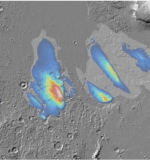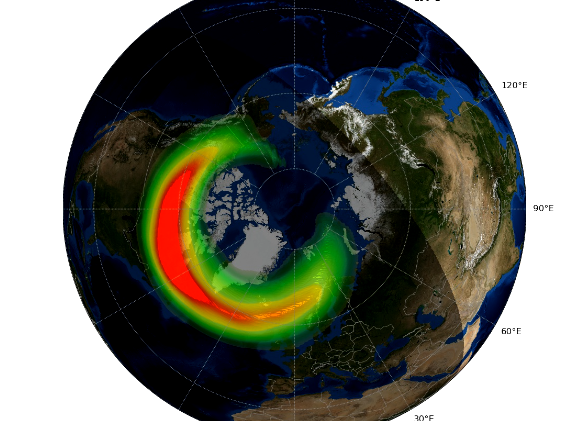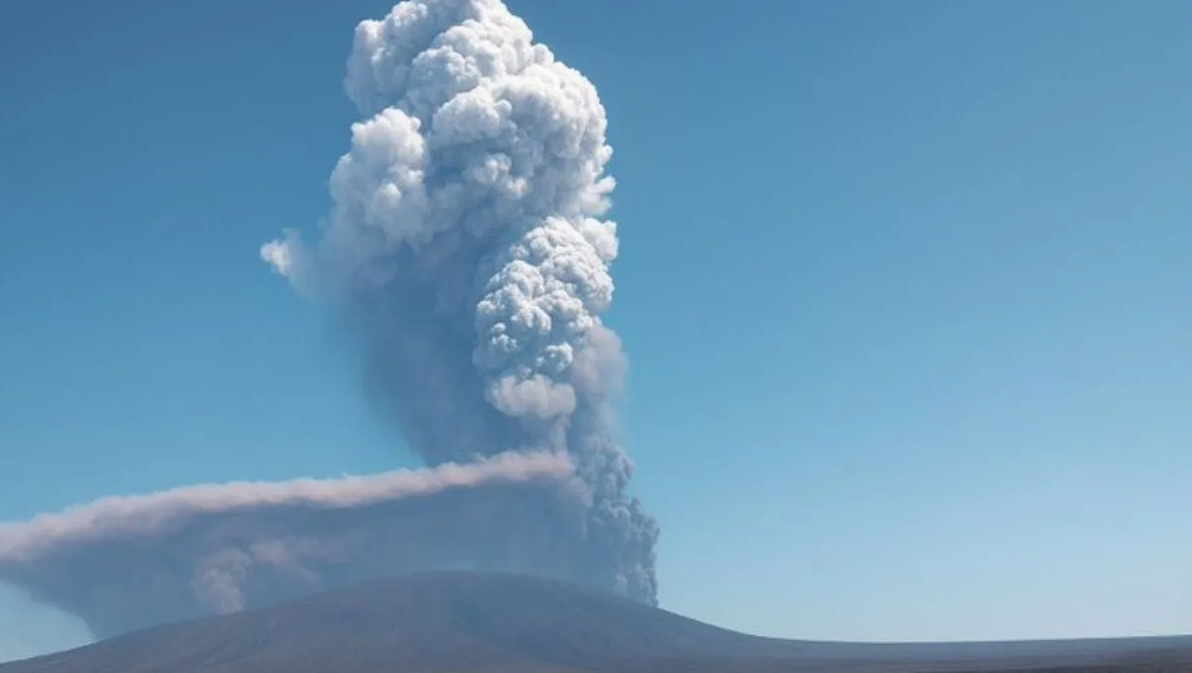“Excitingly, the radar signals match what we expect to see from layered ice and are similar to the signals we see from Mars’ polar caps, which we know to be very ice rich,” said lead researcher Thomas Watters of the Smithsonian Institution in the United States in an ESA statement.
The deposits are thick, extended 3.7km (2.3) miles underground, and topped by a crust of hardened ash and dry dust hundreds of meters thick. The ice is not a pure block but is heavily contaminated by dust. While its presence near the equator is a location more easily accessible to future crewed missions, being buried so deep means that accessing the water-ice would be difficult.
Some 15 years ago, Mars Express detected deposits beneath a geological formation called the Medusae Fossae Formation (MFF), but scientists were not sure what those deposits consisted of. Mars’ geography is split between northern highlands and southern lowlands, and the huge 5,000-km-long MMF is situated near the boundary between the two.
It is suspected that the MMF itself formed within the past 3 billion years from lava flows and was covered in volcanic ash during an era long ago when Mars was volcanically active. Today, the MMF is covered in heaps of dust towering several kilometers high — it’s actually the most plentiful source of dust on the entire planet, fuel for the giant dust storms that can engulf Mars on a seasonal basis. Were the deposits just dust, perhaps filling a deep valley?
More pertinent is the question of how the water ice ended up buried at the equator. Sub-surface ice has been found in plentiful quantities on Mars before; NASA’s Phoenix mission dug up ice just beneath the dusty surface at the lander’s polar landing site in 2008. Meanwhile, early in its mission, Mars Express detected abundant water-ice extending down into the mid-latitudes, and NASA’s Mars Odyssey even found clues to the presence of water in the MMF in 2009.
The presence of subsurface water-ice at low and equatorial latitudes hints at how Mars’ climate was very different in the distant past.
“This latest analysis challenges our understanding of the MFF and raises as many questions as answers,” said Colin Wilson, who is an ESA Project Scientist for Mars Express and the Trace Gas Orbiter, in the statement. “How long did these ice deposits form, and what was Mars like at the time?”
The ice’s existence could be the result of Mars’ wandering axis. Across the Red Planet’s history, the axial tilt of the planet’s poles is understood to have varied quite chaotically. Currently Mars’ poles are tilted to the ecliptic by 25 degrees (compared to Earth, which has a tilt of 23 degrees) but in the past this could have ranged from as shallow an angle as 10 degrees, to as extreme an angle as 60 degrees.
During the periods of high obliquity, when the poles are pointing closer to the sun than the equator, water-ice could form in large quantities on the surface at the equator. That ice could then be buried by ash and dust falls, to remain covered to this day.
The changing obliquity could also explain 400,000-year-old features discovered on Mars by the Chinese Zhurong rover, as well as the existence of gullies formed by liquid water where no such water should have existed.
The new discovery is described in a paper published in Geophysical Research Letters.
Join our Space Forums to keep talking space on the latest missions, night sky and more! And if you have a news tip, correction or comment, let us know at: community@space.com.






 Photographer Finds Locations Of 1960s Postcards To See How They Look Today, And The Difference Is Unbelievable
Photographer Finds Locations Of 1960s Postcards To See How They Look Today, And The Difference Is Unbelievable  Hij zet 3 IKEA kastjes tegen elkaar aan en maakt dit voor zijn vrouw…Wat een gaaf resultaat!!
Hij zet 3 IKEA kastjes tegen elkaar aan en maakt dit voor zijn vrouw…Wat een gaaf resultaat!!  Scientists Discover 512-Year-Old Shark, Which Would Be The Oldest Living Vertebrate On The Planet
Scientists Discover 512-Year-Old Shark, Which Would Be The Oldest Living Vertebrate On The Planet  Hus til salg er kun 22 kvadratmeter – men vent til du ser det indvendigt
Hus til salg er kun 22 kvadratmeter – men vent til du ser det indvendigt  Superknepet – så blir snuskiga ugnsformen som ny igen!
Superknepet – så blir snuskiga ugnsformen som ny igen!  Meteorite That Recently Fell in Somalia Turns Out to Contain Two Minerals Never Before Seen on Earth
Meteorite That Recently Fell in Somalia Turns Out to Contain Two Minerals Never Before Seen on Earth  Nearly Frozen Waves Captured On Camera By Nantucket Photographer
Nearly Frozen Waves Captured On Camera By Nantucket Photographer  It’s Official: Astronomers Have Discovered another Earth
It’s Official: Astronomers Have Discovered another Earth 